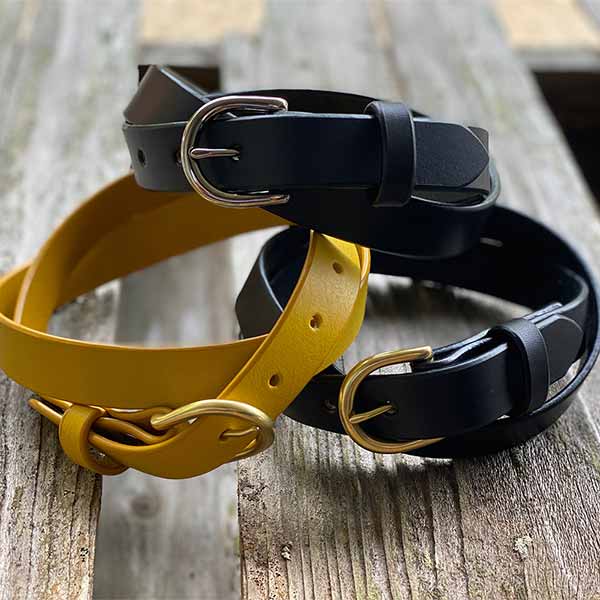Our commitment to our customers is to find and use the best quality materials while keeping our waste down. We are constantly learning so we can continue to hone our craft and create durable items that last.

LEATHER
We source our leather from environmentally responsible American tanneries that use hides that are a by-product of the beef industry, which means no animal is killed solely for its hide. Without the leather industry, approximately 2 pounds of cattle hides would be sent to the landfill each year!
We buy the highest grade, full grain leather to ensure we can create beautiful, durable and long lasting products for our customers.

HARDWARE
The hardware used is made from solid low lead brass and comes in three different finishes - natural brass, nickel plated and black PVD. They all meet the requirements for California's Prop 65 and the European REACH standards. They also go through a CASS, or accelerated wear test to ensure product longevity.

THREAD
For hand stitched items, we use a 100% braided polyester thread that's lightly waxed to help with UV resistance and durability.
For machine stitched items, we use a bonded nylon thread. This thread has a high tensile strength and a resistance to mildew, aging and abrasion.
SUSTAINABILITY
-
We are conscious of who we source our leather from to be sustainable and do our part to cut down on our waste.
The tannery we work with is an environmentally responsible American tannery that uses hides that are a by-product of the beef industry. 100% of the waste water used in production is managed on site to prevent the tanning process toxins from polluting the local water system. They also work with local farmers to turn waste into nutrient rich fertilizer for their farms. Everything sourced - from color dyes to tanning agents - are sourced from environmentally conscious suppliers to ensure the process is as green as possible.
Other ways we cut down on our waste is by thoughtfully designing a range of leather goods. Not only do we make belts, we also design smaller leather items with exact measurements to use the excess from what's created from larger pieces i.e. keychains, coasters, etc. Eliminating waste creates jobs, something we stand by 100%.
-
Environmentally (Un)friendly Leather Alternatives
Vegetable tanned leather products last far longer than synthetic items. Leather products biodegrade in less than 50 years. Synthetic leather alternative items need to be replaced often (think of your cheap belts that don't last) and they can take in excess of 500 years to fully decompose, which makes the environmental impact of actual leather goods dramatically less than synthetic alternatives.
While not all leather alternatives are bad, a disturbing number of them are not good.

